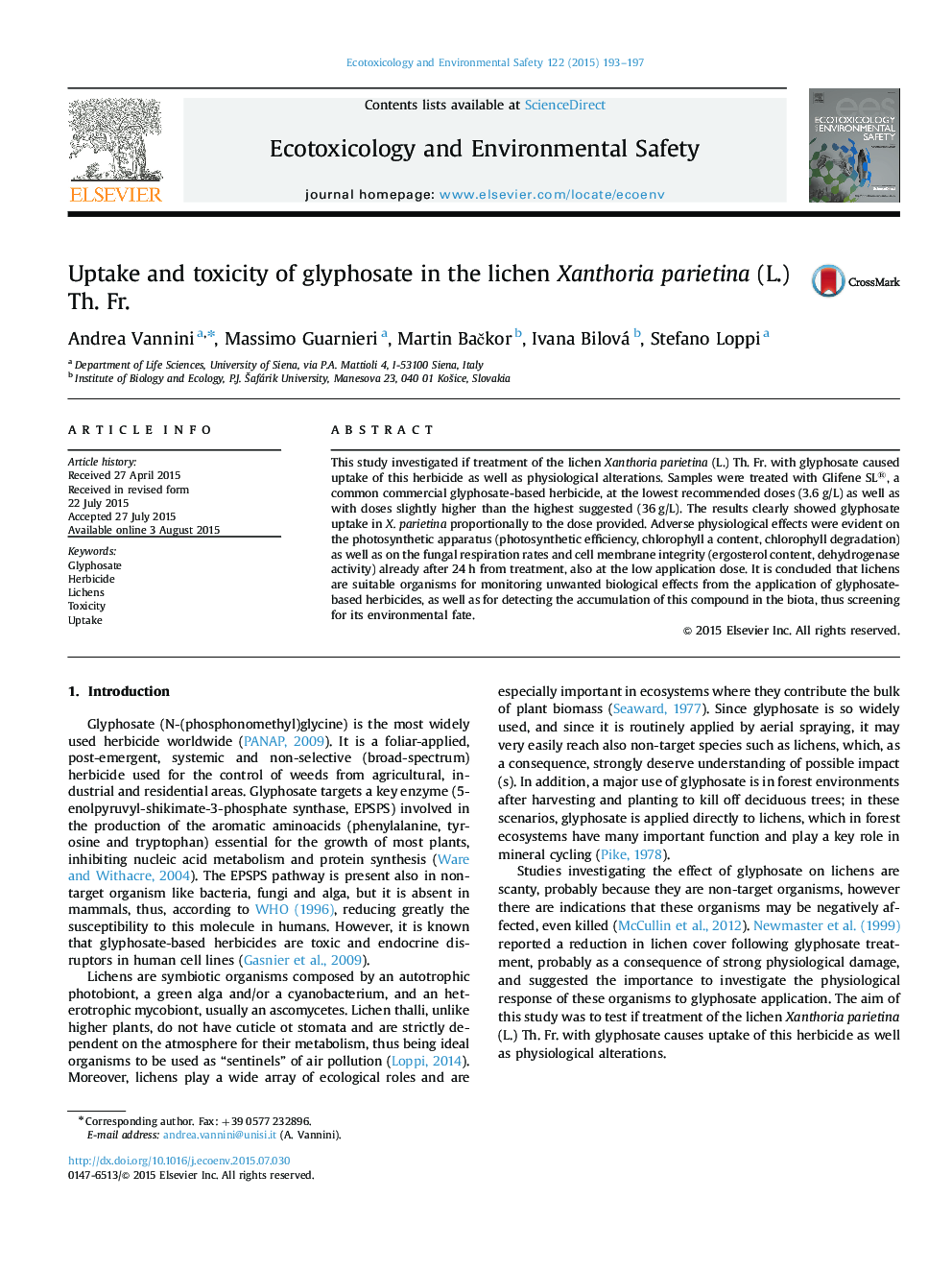| Article ID | Journal | Published Year | Pages | File Type |
|---|---|---|---|---|
| 4419521 | Ecotoxicology and Environmental Safety | 2015 | 5 Pages |
•Treatments with glyphosate severely affected the lichen Xanthoria parietina.•Accumulation of glyphosate was proportional to the provided dose.•Glyphosate affected both the algal and the fungal lichen symbionts.
This study investigated if treatment of the lichen Xanthoria parietina (L.) Th. Fr. with glyphosate caused uptake of this herbicide as well as physiological alterations. Samples were treated with Glifene SL®, a common commercial glyphosate-based herbicide, at the lowest recommended doses (3.6 g/L) as well as with doses slightly higher than the highest suggested (36 g/L). The results clearly showed glyphosate uptake in X. parietina proportionally to the dose provided. Adverse physiological effects were evident on the photosynthetic apparatus (photosynthetic efficiency, chlorophyll a content, chlorophyll degradation) as well as on the fungal respiration rates and cell membrane integrity (ergosterol content, dehydrogenase activity) already after 24 h from treatment, also at the low application dose. It is concluded that lichens are suitable organisms for monitoring unwanted biological effects from the application of glyphosate-based herbicides, as well as for detecting the accumulation of this compound in the biota, thus screening for its environmental fate.
